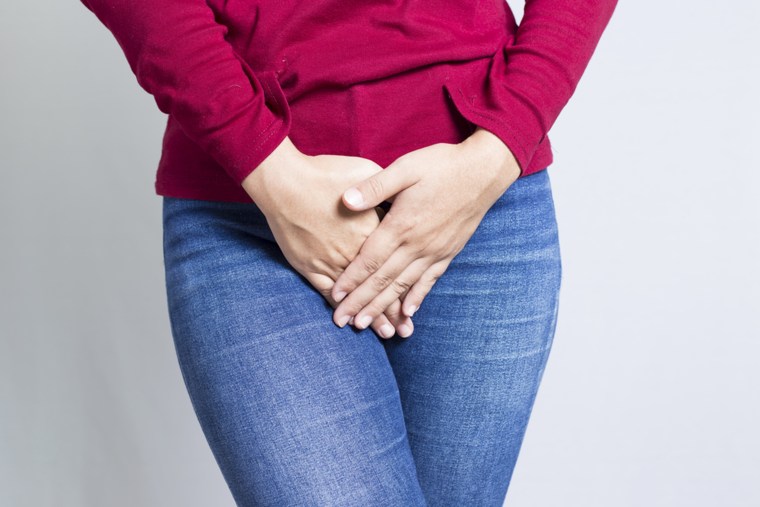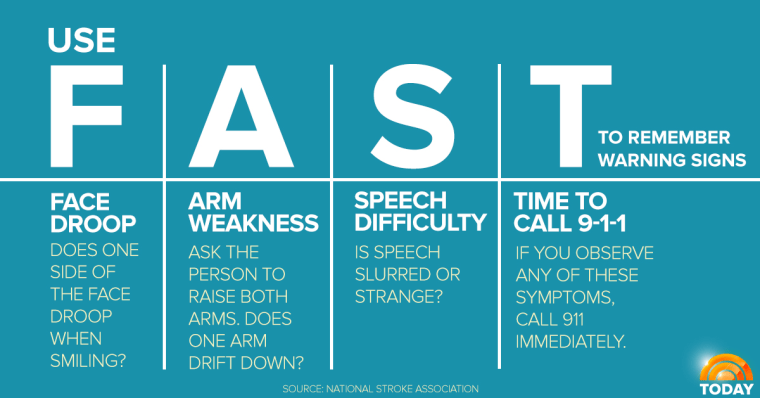Being healthy and staying fit are important to many women. But there are body changes, aches and pains that often get overlooked, especially after turning 40.
Here are four symptoms that shouldn't be ignored:
1. Knee pain
Most likely: Overuse
Worst-case scenario: Ligament or cartilage damage, arthritis
If you're feeling discomfort in your knees, you're not alone. More than 60 percent of women age 50 and older have some type of knee pain. Blame your anatomy. “Women’s hips are wider than men’s hips, and women are slightly knock-kneed,” explains orthopedist Dr. Barbara Bergin of Texas Orthopedics in Austin, TX. “That can translate into problems.”
Knee overuse injuries generally cause pain around the front or sides of the knee, and aren’t related to injuries like falling. The fix: rest. “I tell people don’t squat, don’t climb stairs, rest your knee, but people always think they have to be doing something,” says Bergin. “Pain is your body’s way of saying slow down.”
Ice can also help, as can muscle strengthening exercises. Talk to your doctor about ibuprofen or aspirin.
Another suggestion to help prevent knee pain is to “sit like a man,” says Bergin.
Sit with your knees and legs apart and your feet planted flat on the ground. "Manspreading" — it's good for you.
Unfortunately, women have a higher incidence of knee pain, and are more severely affected by knee osteoarthritis, a progressive problem that destroys cartilage and joints. Hormones play a role.
When to act: If you're experiencing pain and swelling after sitting or resting, if activity causes pain, or your knees lock, buckle, make grinding noises or simply feel weak, see your doctor for a complete evaluation, says Bergin. Osteoarthritis is often treated non-surgical interventions like lifestyle modification, physical therapy and medication.
“We’re all living longer and women want to remain active,” she says. “But knees are really important and sometimes women just live with pain and that can lead to some real mobility problems.”
2. Leg pain
Most likely: Overuse or a pulled muscle
Worst-case scenario: Chronic venous insufficiency, DVT
It’s easy to chalk up leg pain to that that three-mile walk you took after sitting on the couch most of the day.
If the pain resolves quickly with home treatment, it's probably nothing to worry about.
But leg pain in women can be caused by a condition called chronic venous insufficiency (CVI) in which the blood in the legs doesn’t circulate back to the heart effectively. By midlife, about age 50, about 40 percent of women experience its symptoms.
Left untreated CVI can cause leg ulcers and blood clots.
An even more serious leg pain problem could be a blood clot called a DVT, or deep vein thrombosis.
“If the clot breaks away a person can develop a pulmonary embolism, which is life threatening,” says DeJoseph.
DVT’s can occur after sitting for periods of time, like during a long-haul flight, or among women who are taking hormone therapy, smoke or are pregnant. You are also at risk if you’ve had surgery, are obese or have a family history of clots.
When to act: See your doctor if you're experiencing swelling, muscle cramps, leg itching, pain, and leg “heaviness," all symptoms of CVI.
DVT symptoms are “. . . generally apparent,” with redness, pain and swelling of the calf, which can also feel warm to the touch, she says. Shortness of breath or difficulty breathing may also occur.
DVTs are emergency situations, so call 911 and get to an emergency department.
“DVTs are not anything to wait on, hoping the pain goes away,” says DeJoseph. “It is better to go to an ER and find out nothing’s wrong then to stay at home and develop a pulmonary embolism and potentially lose your life.”
3. Frequent urination
Most likely: Urinary tract infection
Worst-case scenario: Diabetes

Most people urinate about eight times a day depending, of course, on how much liquid they drink.
If you're urinating more frequently it could be a symptom of a urinary tract infection (UTI). Women are very prone to UTIs and recurrent UTIs are common as estrogen levels start to wane.
Bottom line: if you are experiencing frequent urination, painful urination, and that urgency —in other words: you have to skip the loo right now — see your doctor.
In some cases, frequent urination is a sign of diabetes, the majority of which diagnosed in adults is Type 2, says DeJoseph.

Diabetes occurs in men and women about equally, but it can really play havoc with a woman’s health. Women with diabetes are at a higher risk of heart disease and have a higher risk for blindness from diabetes, for example.
When to act: In addition to frequent urination, other signs of diabetes include hunger, thirst and fatigue. However, many people don’t notice any symptoms because those symptoms are so mild.
Your best bet to prevent Type 2 diabetes is to know your fasting blood glucose level.
A fasting blood sugar level less than 100 mg/dL (5.6 mmol/L) is normal, according to the American Diabetes Association. A fasting blood sugar level from 100 to 125 mg/dL (5.6 to 6.9 mmol/L) is problematic, and often referred to as “pre-diabetes.”
If you're diagnosed with pre-diabetes, you may be able to reverse your risk.
Numerous studies show that weight loss (as little as 7 percent of your body weight) helps prevent diabetes, says DeJoseph.
Exercise (even moderate exercise like taking a daily walk for 30 minutes) can also lower risk.
“This is a wake-up call for women that can really lead to a much healthier life,” says DeJoseph.
4. Changes in vision
Most likely: Too much screen time or presbyopia
Worst-case scenario: Stroke
Long work days in front of computer screens can cause problems with your vision. Aging doesn’t help. By the time we reach age 45, most of us have a tough time with our near-vision, technically called presbyopia, and we're shopping around for reading glasses.
If you suffer from computer vision issues, the fix is simple:
- take breaks and remember to blink
- adjust your screen (keep monitor, phones and tablets about 20 to 28 inches from your eyes and four to five inches below eye level)
- reduce glare
- and of course, get your eyes checked
However, in some cases, those vision changes could signal an oncoming stroke.

Women — even young women — are at higher risk of stroke than men. Every year about 100,000 women under age 65 are diagnosed with stroke, according to the American Stroke Association. The risk is highest among women who smoke or who have high blood pressure, atrial fibrillation, heart disease, or diabetes. Hormonal changes are also linked to an increased risk.
When to act: If you're experiencing sudden vision changes, especially a loss of vision in one or both eyes, seek immediate medical help. Other symptoms of stroke include a droop to the face, arm weakness and speech difficulties.
This updated story was originally published in 2016